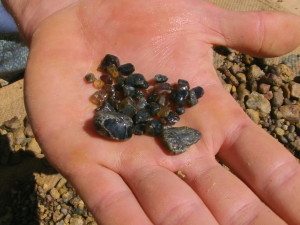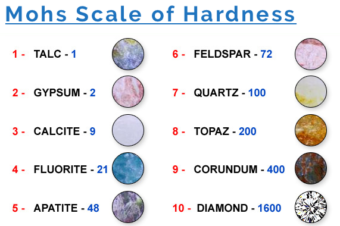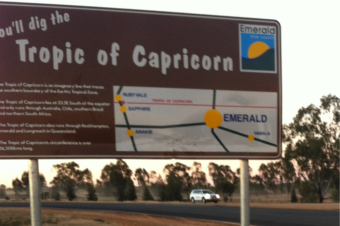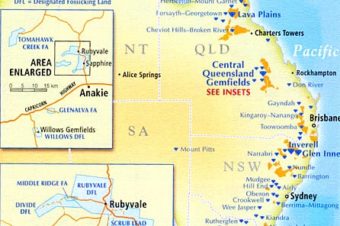 Sapphire, along with Ruby are types of Corundum, which is a rock-forming mineral that is found in igneous, metamorphic, and sedimentary rocks.
Sapphire, along with Ruby are types of Corundum, which is a rock-forming mineral that is found in igneous, metamorphic, and sedimentary rocks.
It is an Aluminum Oxide, as it is known in mineralogy circles with a chemical composition of Al2O3 and forms the shape of a hexagonal crystal structure.
This is not a mineral you often hear about, but is widely known as the second hardest natural mineral known to man and for the fact that it is sometimes found as beautiful transparent crystals in many different colors. The extreme hardness makes corundum an excellent abrasive, and when that hardness is found in beautiful crystals, you have the perfect material for cutting Gemstones like Ruby and Sapphire.
Corundum is formed by both volcanic processes deep in the earth and the high pressure and temperature, conditions of metamorphic processes. As liquid magma deep within the earth slowly cools the minerals dissolved within cool into crystals. The purest and most translucent forms of corundum are created by recrystallization of minerals during the metamorphosis of rocks that are of igneous origin. It is a process that takes millions of years and only a few places in the world have rock outcrops where these rare crystals are exposed by weathering.
The pure form of the mineral corundum is clear and colorless, but mineral ‘impurities’ that seep into the Aluminum Oxide as the rock cools give it its fabulous colors. The distinctive colors of many gemstones are caused by the presence of transition metals as impurities in an otherwise transparent crystal lattice. This is a called crystal-field or, a ligand-field effect. Corundum comes in many different colors, all of which are highly prized if they are free of intrusions and translucent or transparent. When trace amounts of titanium and iron get into the Al2O3 crystal lattice during its formation a beautiful Blue Sapphire is formed





